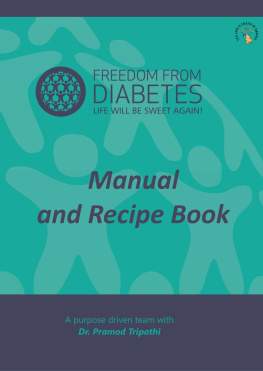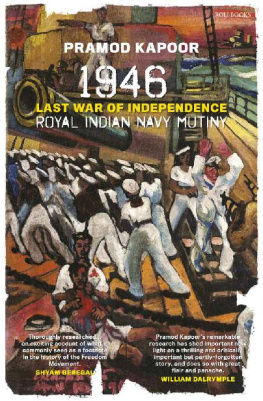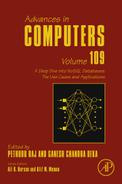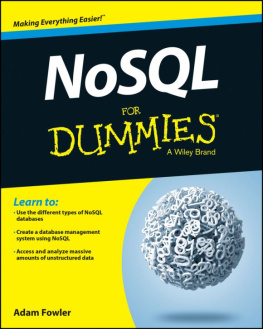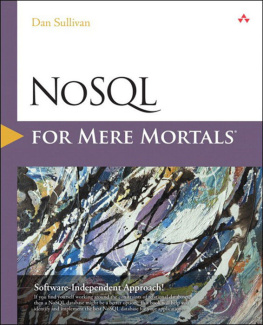Sadalage Pramod J. - NoSQL Distilled
Here you can read online Sadalage Pramod J. - NoSQL Distilled full text of the book (entire story) in english for free. Download pdf and epub, get meaning, cover and reviews about this ebook. City: London;Boston;Mass, year: 2012;2013, publisher: Pearson Education Limited (US titles);Addison-Wesley, genre: Home and family. Description of the work, (preface) as well as reviews are available. Best literature library LitArk.com created for fans of good reading and offers a wide selection of genres:
Romance novel
Science fiction
Adventure
Detective
Science
History
Home and family
Prose
Art
Politics
Computer
Non-fiction
Religion
Business
Children
Humor
Choose a favorite category and find really read worthwhile books. Enjoy immersion in the world of imagination, feel the emotions of the characters or learn something new for yourself, make an fascinating discovery.

- Book:NoSQL Distilled
- Author:
- Publisher:Pearson Education Limited (US titles);Addison-Wesley
- Genre:
- Year:2012;2013
- City:London;Boston;Mass
- Rating:5 / 5
- Favourites:Add to favourites
- Your mark:
- 100
- 1
- 2
- 3
- 4
- 5
NoSQL Distilled: summary, description and annotation
We offer to read an annotation, description, summary or preface (depends on what the author of the book "NoSQL Distilled" wrote himself). If you haven't found the necessary information about the book — write in the comments, we will try to find it.
NoSQL Distilled — read online for free the complete book (whole text) full work
Below is the text of the book, divided by pages. System saving the place of the last page read, allows you to conveniently read the book "NoSQL Distilled" online for free, without having to search again every time where you left off. Put a bookmark, and you can go to the page where you finished reading at any time.
Font size:
Interval:
Bookmark:
A Brief Guide to the Emerging World of Polyglot Persistence
Pramod J. Sadalage
Martin Fowler

Upper Saddle River, NJ Boston Indianapolis San Francisco
New York Toronto Montreal London Munich Paris Madrid
Capetown Sydney Tokyo Singapore Mexico City
Many of the designations used by manufacturers and sellers to distinguish their products are claimed as trademarks. Where those designations appear in this book, and the publisher was aware of a trademark claim, the designations have been printed with initial capital letters or in all capitals.
The authors and publisher have taken care in the preparation of this book, but make no expressed or implied warranty of any kind and assume no responsibility for errors or omissions. No liability is assumed for incidental or consequential damages in connection with or arising out of the use of the information or programs contained herein.
For information about buying this title in bulk quantities, or for special sales opportunities (which may include electronic versions; custom cover designs; and content particular to your business, training goals, marketing focus, or branding interests), please contact our corporate sales department at or (800) 3823419.
For government sales inquiries, please contact .
For questions about sales outside the U.S., please contact .
Visit us on the Web: informit.com/aw
Library of Congress Cataloging-in-Publication Data
Sadalage, Pramod J.
NoSQL distilled : a brief guide to the emerging world of polyglot
persistence / Pramod J Sadalage, Martin Fowler.
p. cm.
Includes bibliographical references and index.
ISBN 978-0-321-82662-6 (pbk. : alk. paper) -- ISBN 0-321-82662-0 (pbk. :
alk. paper) 1. Databases--Technological innovations. 2. Information
storage and retrieval systems. I. Fowler, Martin, 1963- II. Title.
QA76.9.D32S228 2013
005.74--dc23
Copyright 2013 Pearson Education, Inc.
All rights reserved. Printed in the United States of America. This publication is protected by copyright, and permission must be obtained from the publisher prior to any prohibited reproduction, storage in a retrieval system, or transmission in any form or by any means, electronic, mechanical, photocopying, recording, or likewise. To obtain permission to use material from this work, please submit a written request to Pearson Education, Inc., Permissions Department, One Lake Street, Upper Saddle River, New Jersey 07458, or you may fax your request to (201) 2363290.
ISBN-13: 978-0-321-82662-6
ISBN-10: 0-321-82662-0
Text printed in the United States on recycled paper at RR Donnelley in Crawfordsville, Indiana.
Fourth printing, November 2014
For my teachers Gajanan Chinchwadkar,
Dattatraya Mhaskar, and Arvind Parchure. You
inspired me the most, thank you.
Pramod
For Cindy
Martin
Weve spent some twenty years in the world of enterprise computing. Weve seen many things change in languages, architectures, platforms, and processes. But through all this time one thing has stayed constantrelational databases store the data. There have been challengers, some of which have had success in some niches, but on the whole the data storage question for architects has been the question of which relational database to use.
There is a lot of value in the stability of this reign. An organizations data lasts much longer than its programs (at least thats what people tell usweve seen plenty of very old programs out there). Its valuable to have a stable data storage thats well understood and accessible from many application programming platforms.
Now, however, theres a new challenger on the block under the confrontational tag of NoSQL. Its born out of a need to handle larger data volumes which forced a fundamental shift to building large hardware platforms through clusters of commodity servers. This need has also raised long-running concerns about the difficulties of making application code play well with the relational data model.
The term NoSQL is very ill-defined. Its generally applied to a number of recent nonrelational databases such as Cassandra, Mongo, Neo4J, and Riak. They embrace schemaless data, run on clusters, and have the ability to trade off traditional consistency for other useful properties. Advocates of NoSQL databases claim that they can build systems that are more performant, scale much better, and are easier to program with.
Is this the first rattle of the death knell for relational databases, or yet another pretender to the throne? Our answer to that is neither. Relational databases are a powerful tool that we expect to be using for many more decades, but we do see a profound change in that relational databases wont be the only databases in use. Our view is that we are entering a world of Polyglot Persistence where enterprises, and even individual applications, use multiple technologies for data management. As a result, architects will need to be familiar with these technologies and be able to evaluate which ones to use for differing needs. Had we not thought that, we wouldnt have spent the time and effort writing this book.
This book seeks to give you enough information to answer the question of whether NoSQL databases are worth serious consideration for your future projects. Every project is different, and theres no way we can write a simple decision tree to choose the right data store. Instead, what we are attempting here is to provide you with enough background on how NoSQL databases work, so that you can make those judgments yourself without having to trawl the whole web. Weve deliberately made this a small book, so you can get this overview pretty quickly. It wont answer your questions definitively, but it should narrow down the range of options you have to consider and help you understand what questions you need to ask.
We see two primary reasons why people consider using a NoSQL database.
Application development productivity. A lot of application development effort is spent on mapping data between in-memory data structures and a relational database. A NoSQL database may provide a data model that better fits the applications needs, thus simplifying that interaction and resulting in less code to write, debug, and evolve.
Large-scale data. Organizations are finding it valuable to capture more data and process it more quickly. They are finding it expensive, if even possible, to do so with relational databases. The primary reason is that a relational database is designed to run on a single machine, but it is usually more economic to run large data and computing loads on clusters of many smaller and cheaper machines. Many NoSQL databases are designed explicitly to run on clusters, so they make a better fit for big data scenarios.
Weve broken this book up into two parts. The first part concentrates on core concepts that we think you need to know in order to judge whether NoSQL databases are relevant for you and how they differ. In the second part we concentrate more on implementing systems with NoSQL databases.
begins by explaining why NoSQL has had such a rapid risethe need to process larger data volumes led to a shift, in large systems, from scaling vertically to scaling horizontally on clusters. This explains an important feature of the data model of many NoSQL databasesthe explicit storage of a rich structure of closely related data that is accessed as a unit. In this book we call this kind of structure an
Font size:
Interval:
Bookmark:
Similar books «NoSQL Distilled»
Look at similar books to NoSQL Distilled. We have selected literature similar in name and meaning in the hope of providing readers with more options to find new, interesting, not yet read works.
Discussion, reviews of the book NoSQL Distilled and just readers' own opinions. Leave your comments, write what you think about the work, its meaning or the main characters. Specify what exactly you liked and what you didn't like, and why you think so.

